January 20, 2017
Welding Roof Tehnonikol: we study the technology of laying
When building a country house, many people decide to use the services of specialists. After all, they not only have tremendous experience in this industry, but also are responsible for the quality of the erected building. This also applies to the erection of the roof.
For example, the melted roof of Technonikol, the laying technology of which is quite simple, also has its own characteristics. And only a specialist, having carried out his work, can guarantee the high-quality operation of the structure.
The production of high-quality roofing is possible with observance of such rules:
- Thorough preparation of the surface;
- Use of the necessary equipment;
- The correct sequence of work.
Surfacing roofs Technonikol, the technology of laying which is developed by professionals, is often made of surfaced roll materials. They are able to reliably protect the structure of the roof and the building as a whole from the negative effects of atmospheric precipitation and gusts of wind.
In winter, the heat in the room is well preserved, due to the excellent thermal insulation characteristics of the materials. In summer, the material prevents the rooms from overheating on hot days.
A reliable soft roof can be made of various materials. It should be strong, reliable, airtight. All materials that can be used to construct this type of roofing can have different types of substrate, types of protective coating, binders.
Remember that by manufacturing the material, each manufacturer adheres to its technology.
For example, if you prefer a guided roof membrane, then you should choose a polymer-bitumen roll material, the basis of which will be fiberglass or polymer.
Features of the base of the roof
The welded roof should be laid only on a flat surface. There are several possible grounds for this type of roof:
- Reinforced concrete slab, without leveling screed. All seams are cemented with a solution of cement and sand.
- Thermal insulation monolithic, made of lightweight concrete (base - reinforced mesh, bitumen and cement-binder, fillers).
- Thermal insulation boards made of mineral wool, without additional leveling screed.
- Monolithic screed, made of a solution of cement and sand, asphalt concrete.
- A composite screed consisting of flat sheets of asbestos cement, cement-particle boards, etc.
The installation of a directional roof provides for preliminary preparation not only of the foundation, but also of all vertical structures that are on it. This applies to chimneys, parapets, ventilation shafts, etc. Their walls need to be plastered (cement-sand mixture) to such a height, which will lead to the future edge of the roofing material. The minimum height is 25 cm.
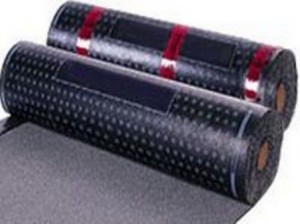
The grounds must be level. All irregularities and protrusions are cleaned or cut. Oil stains are burned out, dust is blown off with a vacuum cleaner. Large cracks or potholes are cemented, small - poured with warmed bituminous mastic.
Roof mounting Technonikol
Laying of the roofing material takes place on a dry substrate. For verification, use a surface moisture meter that measures humidity. If the roof is wet, it can be dried by blowing a heat gun.
In places with joints with vertical structures, create fillets. These are the sides, 10 cm high and 45 degree slope. For this purpose, use a rigid mineral wool board, asphalt concrete, mortar of cement and sand.
After removing debris, the surface is primed with a bitumen primer roller or brush.
Laying of the material begins after the primer has dried from the bottom of the roof. First of all, the roll is rolled out completely, to check if it is lying correctly. After the burner fix the beginning of the roll, and the material rolls.
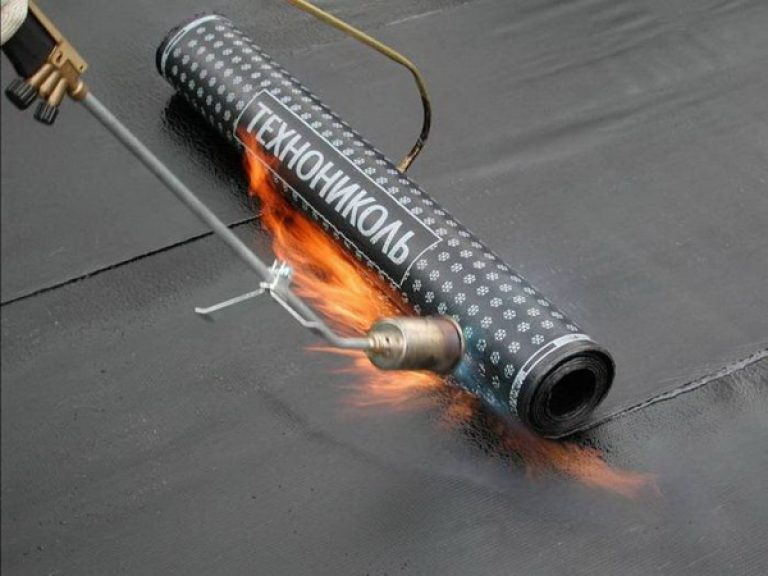
This type of roof is fixed by melting the bottom layer of bitumen in the roll material and pre-heating the primer. Therefore, it is necessary to correctly position the burner. It must move along the path of the letter "g". After the first tape is laid, you need to check the seam. If he leaves, then lift it with a roller, warm it up and roll it down.
The second cloth must necessarily be overlapped. It should be about 8 cm for the coccus, 15 cm from the end. Fusion joints are made taking into account the angle of inclination of the roof. Under them, no water should leak.
A roll material with a coarse-grained powder is also used, which is closed by the temperature-shrinkage seams of the screed. This material should be laid down by sprinkling.
Adherence to the parapet is carried out this way. At a height of 25 cm, the lower edge of the carpet is turned on, attached mechanically. After it, the finishing layer is wound up to 5 cm. Then, using special tools, the tape is assembled from the material with a protective coating. It provides a high-quality seal.
You can weld new material on the old soft roof, the main thing is to remove all the defects.
Address to experts who for a minimum period of time can build a reliable, high-quality roof.
Products of the company "Technonikol" have been heard by residents of Russia for more than twenty years, mainly materials for roofing, as well as insulation, films, everything that can be used in roofing work. First of all, the reputation of the manufacturer of high-quality coatings of the company "Technonikol", whose roll roof is deserved authority and considerable demand, is well known to the consumer. Surfacing roof "Technonikol" in terms of price / quality ratio stands in line with the products of famous Finnish manufacturers.
What "Technonikol" offers for a soft roof on flat roofs
Options for soft roofing "Technonikol" for laying a waterproof coating are many. Only the roll materials of the company "Technonikol" offers several dozen types. Not distracted by the fineness of a brand, the waterproofing of the roof "Technonikol" can be made one of the main types of roll material:
- Based on reinforcing mesh or canvas made of polyester fiber. The most expensive, durable and durable roll roofing. Such brands show high strength and flexibility even at very low air temperatures. The cost of the roll is approximately 30-40% higher than that of the ordinary version with a glass base;
- Coverage based on fiberglass hosts and fabrics. Inexpensive and high-quality material for roof insulation, production technology differs from the previous one by using thicker and less flexible fiberglass yarns;
- Non-basic materials that do not have a tissue base. In this case, the bitumen-polymer mass is rolled in roller presses and sealed with a film. In this case, the technology of laying the soft roof "Technonikol" is reduced to melting and rolling out the mass with a special device;
- PVC membrane for the roof "Technonikol", a relatively new type of roofing for our market. Unlike the previous versions, textured polyvinylchloride, reinforced with polyester fibers, is used for the membrane's waterproofing layer.
For your information! Polymer membranes are today considered to be the most durable and practical type of coating for roofs. Plasticized polyvinyl chloride is very resistant to ultraviolet, precipitation and air temperature fluctuations. If the technology is observed, the manufacturer guarantees that the PVC membrane soft roof "Technonikol" will not lose its properties for 40 years of operation.

All roll materials for waterproofing from the company "Technonikol" have a surface powder from basalt or slate crumbs. This allows you to create a protective layer for the roof and reduce the sensitivity of the material to scratches, punctures, cuts from shoes, tools, debris, birds, any objects caught on the roof.
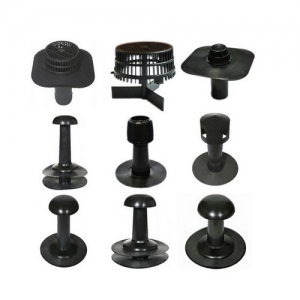
Waterproofing of flat roofing "Tehnonikol"
Roll-up versions are mainly used for waterproofing roof coverings with flat roofing. This can be a flat roof of a garage roof or a multi-storey building, in any case, the main advantage of a roll-type material is the high rate of laying the coating while providing a high degree of waterproofing.
Unlike flexible bituminous shingles, roll roofing, as a rule, does not have a textured or painted surface, a three-dimensional pattern imitating tile or stone masonry. The color of the material is most often limited to black or gray.
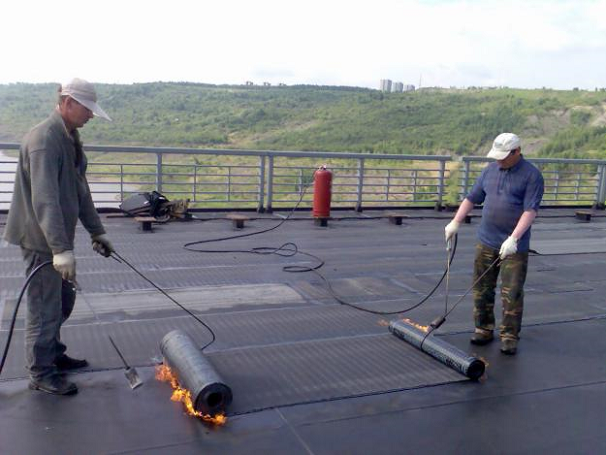
Laying of a soft roll roof "Technonikol"
Like any other material of this kind, the roll coating "Technonikol" fits in the following order:
- The base under the future roof is thoroughly cleaned from dust and dirt, stones, exfoliated pieces of old coating. If the laying is carried out on a concrete slab, it is important to cleanse the cement surface as much as possible from moisture and dust. Cleaning is done only dry;
- Glue the melt and mastic or uncoated roll material with knots and areas of contiguity to walls and ventilation pipes, if any;
- A gas or solar burner heats up the roof area, from which the laying of the soft roof begins. Next, install a roll and, by heating the flame surface and material to the melting point, gradually roll out the material. Surfacing is performed by rolling the roll over. Each next roll of soft roof is stacked with an overlap on the edge of the previous panel.
Soft roofing material, as a rule, is laid in two layers. The first layer can be pasted on the bituminous mastic, the second must be welded, and the arrangement of the panels is selected so that the top layer is shifted by half the size and completely closes the seam on the lower layer. The technique of laying a soft roof is available on video:
It should be noted that the work on laying the roof, "Technonikol" or any other, it is necessary to hold only in the most dry weather. It is usually considered that the most favorable conditions are created during the late dry autumn, when the humidity of the air is lower, but the temperature is still between 5-7 ° C.
It remains to install cornices and aerators.

Why you need a roofing aerator
The main problem for any waterproofing layer is the presence of water vapor in the concrete or any other base on which the roofing material is laid. Remove moisture and dry the surface is almost impossible. Over time, water vapor penetrates through the pores in the concrete under the laid bitumen waterproofing, which often leads to the appearance of bubbles or flaking of large pieces of the roof liner from the substrate. About what reasons the aerator assembly is required, it is clearly enough explained in the video.
Roofing.
A special place is occupied by materials produced under the trademark "Technonikol". The products of this company have a wide range and high quality, which allows using it in the construction of buildings for various purposes.
The corporation produces soft roofing on the basis, including. The production of materials based on bitumen-polymer components has also been mastered. And recently the production of roofing membranes, based on rubber and petroleum-resin resins, has begun.
Price categories for soft roofing Technonikol
All production is divided by the manufacturer into four price categories: Economy, Standard, Business, Premium. Each of them contains several types of roofing materials.
The class "Economy" is represented by the materials Glass and Bicrost.

The "Standard" class is represented by the materials of the Linocom, Bipol and Bikroelast.
- Linocom - is based on fiberglass or non-woven polyester fiber, on which the binder is made, prepared with the newest technology of modification of bitumen with polyolefin additives. This made it possible to obtain a material significantly superior in its properties to oxidized and cheap polymer-bituminous materials. The mounting of the Linocrom is made by the method of fusing with open fire. On the underside of the material there is a thermal indicator that signals its readiness for laying. The lens is used for roofing and waterproofing foundations.
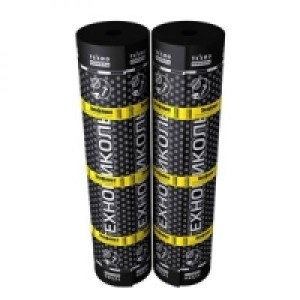
- - also consists of a strong, non-rotting base, on which is applied a quality bitumen-polymer binder. Its underside is covered with a lightly melted polymer film, the upper side with a coarse-grained mineral powder or film.
The bipole is laid on a cement-sand screed or primed concrete base and fused with a propane torch. High adhesion of the material allows it to be welded on any inclined, vertical and horizontal incombustible surfaces.
- Bikroelast - made similar to the previous materials, but here used an astringent, prepared according to a special technology. Due to this, the material easily bends at a temperature of -10 degrees and has a heat resistance of up to +85.
The class "Business" is represented by the materials of Uniflex and EcoFlex:
- Uniflex - SBS-modified, weldable roofing and waterproofing material. The material is compatible with oxidized bitumen, so it can be used even for repairing old roofing felt roofs.
- Uniflex Vent - can be used to repair old roofs, having swellings and bubbles, as well as for the construction of new "breathing" roofs. The exposed surface of the material is covered with strips of binder, the space between them is filled with fine sand. It is these channels that allow the roof to breathe, ensuring the absence of bubbles and the need for frequent repairs.
- Ecoflex - Plasto-elastomer weldable material for roofing and waterproofing.
Impregnation of the base is produced by a high-quality bitumen mixture with modified plastomerically-elastomeric additives. They give the material unique properties: resistance to temperatures up to +120 degrees and flexibility to -50.
Class "Premium" is represented by materials Technoelast and Vestoplast.
- Technoelast - SBS-modified surfacing material of increased reliability. A layer of elastic polymer bitumen is applied on a solid base. As the modifier used artificial rubber - SBS. Thanks to this, the service life of Technoelast is about 30 years. The material can be used both in the Southern latitudes and in the regions of the Far North, since its characteristics fully meet the most stringent global requirements.
- Westoplast- The unique properties of this deposited material are due to the use of atactic polypropylene (APP) as a bitumen modifier. It is used for roofing or waterproofing with increased reliability requirements. It is indispensable in the production of works in hot weather - thanks to increased heat resistance, completely retains the original characteristics, ensuring a comfortable work.
Flexible shingles Tehnonikol
It is a flat element with figured notches on one edge. At the base of the tile is a fiberglass, impregnated with modified bitumen.
The upper surface of the elements is covered with coarse-grained basalt powder of various shades, protecting the material from mechanical and atmospheric influences. The bottom surface of the tile is covered by 60% with a layer of self-adhesive, frost-resistant mass protected by a film.
Flexible tiles are used on roofs with a slope of 12 degrees. Its great advantage is the possibility of using on roofs of any complexity (domes, bulbous roofs) with a guarantee of 100% tightness of the coating.
The Teknonikol shinge has excellent noise-absorbing properties.
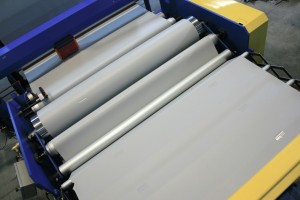
Produced by the corporation under the brands Logicroof and Ecoplast.
They are polymeric waterproofing films consisting of three layers. They have low weight and very high flexibility with practically zero permeability.
The upper layer of membranes contains UV absorbers, which ensure the material's resistance to ultraviolet radiation and significantly prolong its service life.
Special additives introduced into the material reduce its flammability, which allows the use of membranes for roofs of buildings with increased requirements for fire resistance.
All the products of the corporation Technonikol are designed taking into account the Russian climatic features and are suitable for use throughout the country.
Technonikol is a Russian manufacturer of roof tiles, which produces soft roofing materials for flat and pitched roofs under the same name brand.
Their quality is indicated by the availability certificate ISO 9001, it is issued only to trusted manufacturers.
Tile Tekhnonikol is presented in several varieties, each of which is suitable for certain types of roofs.
The construction of the Tekhnonikol roll roof in general outlines the structure of other brands: the base consists of those or other types of fiberglass, it is covered with bituminous interlayers on both sides, coating is applied on them. Products Tehnonikol classified by price values ( economy, standard, business, premium) and on the constituent materials.
Economy:
- Glassisol. This roll material consists of a glass wool base, bitumen and filler, the role of the protective layer is carried out by a polymer film.
- Bikrost. Roll material based on fiberglass or fiberglass. The surface layer is made of oxidized bitumen.
Standard:
- Linocom. It is based on polyester fiber, the binder is made of bitumen modified with polyolefin additives.
- Bipole. The structure of the material is similar to the Linocrom with the difference that the Bipole is covered with a polymer film from the bottom and a mineral film is placed on top of it.
- Bikroelast is similar in its structure to Linocrom and Bipole, but the knitting layer here is made in a special way, which gives it a high heat resistance.
Business:
- Uniflex. The basis is polyester covered with polymer bitumen.
- Ecoflex. Plasto-elastomeric material, suitable for both roofing and waterproofing.
- Technoelast. It is distinguished by the presence of additional protection from artificial rubber.
- Westoplast. Here, atactic polypropylene is added to the bitumen, which makes the material very reliable.
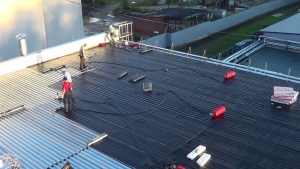
Roofing Technonique
Soft tile technonikol (for example) for pitched roofs also subdivided into varieties, they differ among themselves patterns (type of cutting) and the number of layers, while materials of manufacture remain the same: in the basis of a fiberglass, the coating is made of basalt granules.
- Single-layer: Samba, Foxtroth, Rumba, Tango, Modern, Quadrille, Flamenco, Accord, Sonata.
- Two-layer: Western, Jazz, Country, Ranch.
- Three-layer: Continent. It is characterized by incredible durability - the manufacturer claims a minimum life of 60 years.
Roof pie
Mounting of roll and membrane roofing
Installation of a flat roof is simplified by the fact that here there is no need to build a rafter system - the base of the roof is the walls of the building. Do not pay special attention to wind protection, since the flatness of the flat structure is minimal.
Installation of the roof begins with the installation of a base of metal or concrete. It is filled with crushed stone and expanded clay to ensure a natural slope of the structure.
If the heater is not rigid enough, it is necessary to lay an additional screed, which will protect it from deformation. The last layer of the roof is covered with a coating Technionikol, which performs the functions of waterproofing and finishing layer, giving the roof aesthetic appearance.
To the roof does not accumulate liquid, the system of water drains is arranged. In small buildings for individual use, outdoor gutters are constructed, consisting of funnels. Funnels are installed in the places of the greatest slope of the roof.
Flexible tile Tehnonikol: installation and installation
The device of a soft roof and technology of packing technonikol practically differs nothing from other kinds of flexible tiles. The installation of pitched roof begins with the installation of rafters. The distance between the rafter should be 60-100 centimeters. The exact value in this range is chosen taking into account the dimensions of the thermal insulation material, which will fit into the space between the rafters.
Let us pass directly to installation instructions soft roof ():
- On the rafter system with a construction stapler mounted waterproofing layer. Although the soft Teknonikol tile itself is moisture resistant enough, a separate layer of waterproofing will not be superfluous, especially in climatic zones with frequent precipitation.
- Over waterproofing and rafters lathing is laid. The shading step (the distance between parallel bars) depends on the tiles. The wavelength can vary significantly for each kind of material.
- In the places where skates intersect two additional boards are installed on the crate - they will be attached to the rope of the roof.
- The whole plane of the billet is laid waterproof plywood or OSB boards. It is mounted on the tile in the direction from the cornice to the ridge.
- To the lining, the sheets are attached to an adhesive surface, and they are connected with each other using nails. Shingles adjacent to the ridge are installed last.
When performing work, it is necessary to provide natural ventilation internal space of the roof. For this, a gap is left between the pie layers, and a through space is provided inside the ridge.
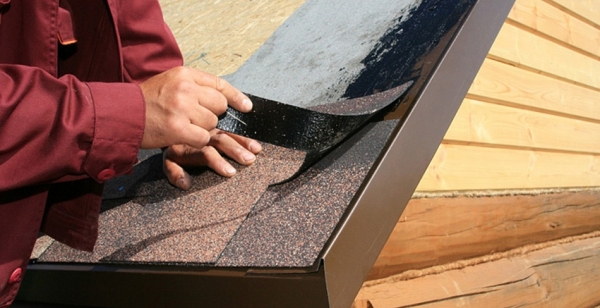
Installation. Part 1

Installation. Part 2
Additional elements
After installing the tiled roof additional elements are installed. Most of them are produced by Technonikol.
- Curtain rod Technionikol performs the function of protecting the crate from moisture ingress. She is fastens to the front plate on the lower edges of the roof slopes.
- The end plate acts as a windshield and is mounted on the side edges of the roof.
Technonikol produces and ventilation elements. The ridge aerator for soft roofing technonikol allows to provide air exchange in the roof even at large ones.
To install the aerator, leave free space under the ridge and attach it to the crate two additional boards - on them and this element will be installed. After installing the aerator on top of it, tile sheets are installed.
Due to the fact that the Technonikol produces both basic and additional elements of the roof, it is possible to use the products from only one manufacturer when installing the roof, and this is more convenient and reliable.

Additional elements
Useful video
Installation of flexible Tekhnonikol shingles in the video instructions:
In contact with
The company "Technonikol" is one of the largest and most popular in Russia. She is engaged in the production of all kinds of building and finishing materials, special attention among which deserve the roofing. In this article, we will discuss in detail the features of the choice and installation of the soft roof Tehnonikol.
First of all, it should be noted that all the products produced at the Tekhnonikol plants have the highest quality certificate of ISO 9001. But the popularity of the company is facilitated not only by good quality, but also by acceptable prices that meet the capabilities of the Russian consumer.
Soft roofing is a finishing coat made of special flexible materials based on bitumen. There are several types of soft roofing Technonikol: bitumen shingles, polymer membrane and roll materials, which glue on the mastic. This is a relatively new way of finishing the roofs of houses, which replaced the hard classical materials - slate, ceramic tiles, etc.
To avoid lengthy expressions, let's look at each of the advantages of a soft roofing Technonikol:
- It is fully adapted to the specific weather conditions in Russia, where the temperature can range from + 50C to -60C. There are separate types of bitumen shingles and roll materials, capable of carrying any heat and cold.
- The soft roof suffers mechanical influences (fall of tree branches during a hurricane, strong hail, gusts of wind, etc.).
- Provides 100% waterproofing of the roofing cake and replaces the waterproof layer following the heater. Thus, you save on purchasing the necessary materials.
- Installation of a soft roof is quite simple, but its specificity differs depending on the type of material (tile, membrane, roll). In this case, you do not even need any special equipment, just a hammer and fasteners.
- Allows you to embody the most daring design solutions and create original facades.
- One of the most important advantages of the Tekhnonikol bituminous roof is good sound insulation - during a shower or hail you will not be disturbed by noise, as in the case of metal roofing.
- High frost resistance of some types of products makes it possible to use them even in conditions of the extreme north.
- The longevity of some types of soft roofing on bituminous substrates can only be envied - after installation for the next 30 years you can forget about the overhaul.

With such excellent performance characteristics, the soft roof of Tehnonikol owes its special structure. At the heart of a flexible material is usually a fiberglass or fiberglass. The latter is considered to be more solid and of high quality. This base is impregnated with bitumen with polymer additives and plasticizers, after which they are covered with loose material (usually granite or quartz sand).
Cost of roofing
Since the technology of the Tehnonikol roof involves the use of different materials, the cost of each of them determines the way of installation and performance. Also, the decisive factor is the longevity of the material. For example, a cheap soft roof economy class will last 6-7 years, and the coverage of "Premium" is guaranteed to last for 25-30 years.
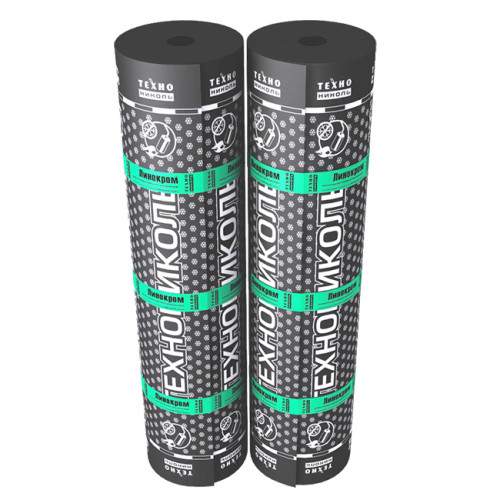
Quality roof "Premium" in addition to longevity is different and other specific properties. So, it contains modified additives, which make it vapor permeable and non-flammable. Also on sale there is a wide color palette of bituminous shingles, capable of realizing any design idea.
All Teknonikol roofing materials are divided into the following classes:
- "Econom" - easy and fast installation, the simplest protection (roll roofing Technonikol Bikrost).
- "Standard" - used for roofs with different gradients and different complexity (Bipol and Bikroelast).
- "Business" is a high-quality material capable of simultaneously protecting from moisture and providing micro-ventilation of the roofing pie (Uniflex).
- "Premium" is the most durable and reliable material with a service life of more than 25 years (Uniflex).
Stacking technology
The device of soft roofing Technonikol can be carried out in two ways: by means of fasteners and fusing. The first method is used to cover inclined roofs, attaching the panel with nails, staples, self-tapping screws or gluing on the mastic. Fasteners use only zinc-plated, as they do not lend themselves to corrosion. To increase the threshold of strength, each segment is nailed next to the previous tile slightly overlapping several nails.
Surfacing roofing Technonikol is used only on flat roofs of exploited and unexploited type. It is represented by roll materials, which are rolled out on the surface and heated with a gas burner.
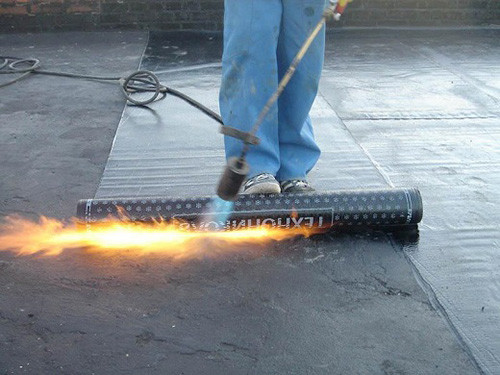
Before laying a flexible Teknonikol material for the roof, the surface must be prepared: align, clean and dry. It is not recommended to carry out installation work in wet, foggy or rainy weather, otherwise the material may swell. For non-exploited roofs of private houses it is better to make a base under a soft roof from sheets of moisture-resistant thick plywood or chipboard. As a result, you should get a strong and reliable crate, capable of withstanding the weight of all layers of roofing material.
Useful advice: Be sure to treat all wooden elements with antiseptic and fire retardant before laying the soft roof.
It is also not recommended to install bitumen tiles or welded rolls in case of extreme frost or heat. The optimum temperature for working with Technonikol is from -5C to + 24C. Therefore, it is better to work out the roof from mid-spring to early summer and early autumn to rains.

Roofing Technonikol is characterized by a long service life, but in order to prolong it even more, it is necessary to provide venting of the overburden. To do this, use special devices - aerators. They form air streams under the roof and quickly erode any condensate. To ensure that water does not linger on the surface, the tile elements are spread from bottom to top, starting at the corner.
To more fully represent the process of laying the bituminous roof of Technonikol, see the video below:
Roof pie
Roof pie is a multi-layered construction, the task of which is to protect the house from rain, cold, wind and other environmental influences. The construction of the Technonikol roof depends on the material lying in the basement.
Wooden roof:
- soft roof material;
- lining of plywood or chipboard;
- crate;
- waterproofing or SDM-membrane;
- heat insulation;
- crate for fixing thermal insulation;
- vapor barrier material.
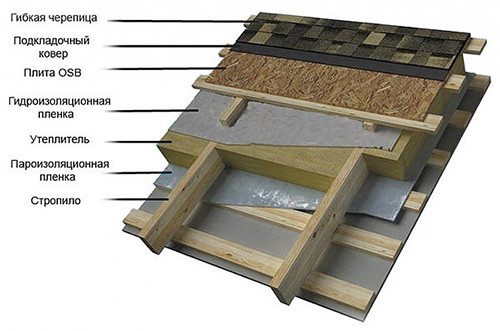
If the base is a horizontal concrete slab, the roofing pie will be slightly different:
- roofing finishing;
- sloup with claydite concrete, cement-sand screed, etc .;
- heat insulation;
- vapor barrier membrane.
Before proceeding with installation, make a detailed plan for laying each layer of roofing pie and purchase all necessary materials with a small margin.
Steam Insulation Technonikol
For reliable protection of the roof from condensation, it is not enough to install aerators only - it is necessary to equip the roofing cake with a layer of vapor barrier. It is a special film that does not let water pass to the heater. There are several types of vapor barrier membranes with individual characteristics. So, for example, a one-way membrane protects the heater well, but to evaporate condensate from it, leave 2-3 cm of ventilation space between it and the roof lining from the inside (the ceiling of the attic).
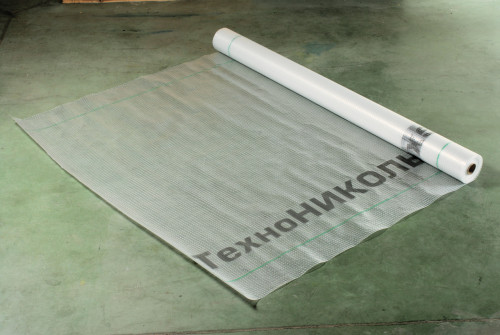
Two-sided membranes do not need this gap, so they save more free space in the attic. The steam insulation of the Tehnonikol roof is appreciated above all for its good quality, durability and ecological cleanliness. In addition, the membranes are completely fireproof and meet all the requirements.
Steam-insulating films Tehnonikol have a special structure and consist of three layers. It not only ensures the temperature and humidity balance in the house, but also does not allow dust to accumulate in the insulation, and protects the interior from noise from the street.
One can not but note the fact that it is possible to lay the Tehnonikol vapor barrier on absolutely any surface, even on untreated boards or metal beams.
Depending on the type of roof, there are two types of Tekhnonikol vapor barrier:
- For pitched roofs - the Technonikol membrane, consisting of a polymer film and two layers of polypropylene nonwoven fabric. During the operation of such a diffusion film, an irresistible barrier forms between the layers, which reliably protects the heater from condensation. The water simply drains down and evaporates in the ventilation space.
- For flat roofs - perforated or non-perforated film. The first are of high strength and do not prevent the roof cake from "breathing". Condensate with perforated vapor barrier evaporates almost instantly, which contributes to the creation of a comfortable microclimate in the room. The Teknonikol film for flat roofing consists of several finest reinforced layers, which explains its ability to withstand high loads. This is especially important in the arrangement of the roof.
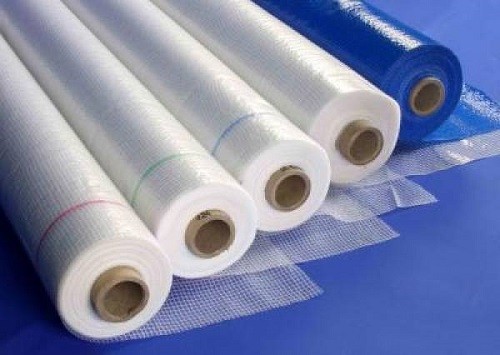
Advantages of Tekhnonikol vapor barrier:
- Low cost with excellent European quality.
- Absolute environmental friendliness - for the production of vapor barrier use safe components that do not emit toxins or other harmful substances. That is why the Technonikol membranes can be used for the construction of any buildings: factories, dachas, houses, kindergartens, food enterprises, etc.
- The versatility of the Tekhnonikol vapor barrier makes it possible to use it not only for arranging a roofing cake, but also for protecting walls and floors.
- Easy installation - to install a vapor barrier film, unfold it with a smooth side inside the house and glue it with a special adhesive compound. It is better to buy immediately with a vapor barrier and do not use conventional glue. You can lay the strip of material horizontally or vertically with an overlap of 15 cm and placing them on walls for 25-30 cm. A flexible structure of the vapor barrier allows to securely isolate all the nodes of the Tehnonikol roof.
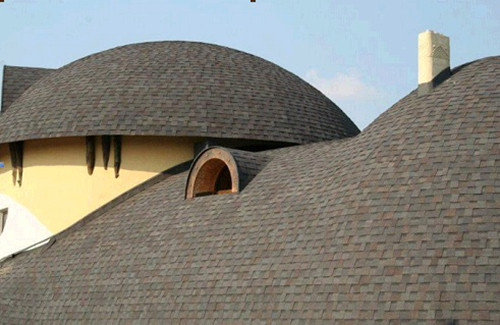
When choosing a vapor barrier, consider the type of roof with which you will work. For flat roofs, choose a perforated film, and for a wooden roof, select a membrane. Roll materials are better to buy in the event that the roofing cake contains a conventional moisture absorbing insulation, for example, mineral wool. Before purchase, make sure that the products are certified. Since Technonikol is one of the leading manufacturers, it is often possible to find counterfeits on the market.
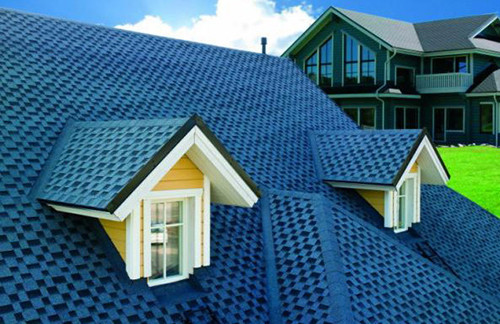
The technology of the Tekhnonikol roof is maximally adapted to the conditions of the Russian climate and the opportunities of the domestic market. With the installation, if desired, any master will cope, even without having professional skills. Inexpensive roll materials can cover the roofs of garages, sheds, houses and other buildings. Bitumen shingles Technonikol differ from each other not only in colors but also in size, texture and shape. With such a roof, the houses will not only be cozy, but also beautiful.
